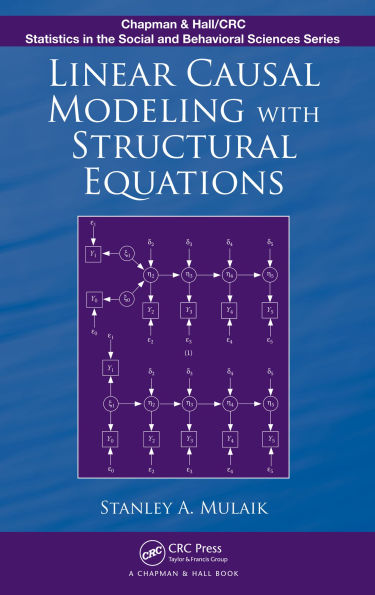Emphasizing causation as a functional relationship between variables, this book provides comprehensive coverage on the basics of SEM. It takes readers through the process of identifying, estimating, analyzing, and evaluating a range of models. The author discusses the history and philosophy of causality and its place in science and presents graph theory as a tool for the design and analysis of causal models. He explains how the algorithms in SEM are derived and how they work, covers various indices and tests for evaluating the fit of structural equation models to data, and explores recent research in graph theory, path tracing rules, and model evaluation.
1100390526
Linear Causal Modeling with Structural Equations
Emphasizing causation as a functional relationship between variables, this book provides comprehensive coverage on the basics of SEM. It takes readers through the process of identifying, estimating, analyzing, and evaluating a range of models. The author discusses the history and philosophy of causality and its place in science and presents graph theory as a tool for the design and analysis of causal models. He explains how the algorithms in SEM are derived and how they work, covers various indices and tests for evaluating the fit of structural equation models to data, and explores recent research in graph theory, path tracing rules, and model evaluation.
210.0
In Stock
5
1

Linear Causal Modeling with Structural Equations
468
Linear Causal Modeling with Structural Equations
468Related collections and offers
210.0
In Stock

Product Details
| ISBN-13: | 9781040204214 |
|---|---|
| Publisher: | CRC Press |
| Publication date: | 06/16/2009 |
| Series: | Chapman & Hall/CRC Statistics in the Social and Behavioral Sciences |
| Sold by: | Barnes & Noble |
| Format: | eBook |
| Pages: | 468 |
| File size: | 3 MB |
About the Author
What People are Saying About This
From the B&N Reads Blog
